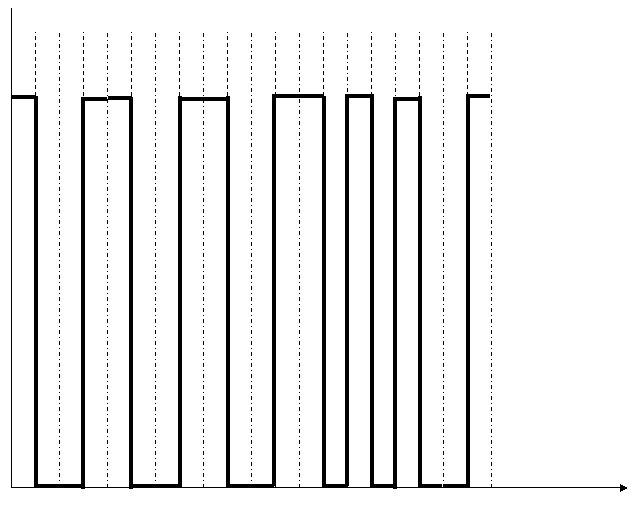

 CSIT 220: The Week beginning Sept. 20
CSIT 220: The Week beginning Sept. 20




- Reading:
Chapters 8-11 in Computer Networks and Internets (Comer)
- Homework:
- Give your first, last and middle initials. (If you don't have a middle
initial, make one up). Put your initials into an 8-bit ASCII format. For
ASCII representation of each initial, determine a parity bit assuming even
parity.
Some information on ASCII
- Add up your binary numbers (without the parity bits) to generate
an eight-bit checksum. If all possible errors were equally likely,
what percentage of errors would be caught by such a checksum? (The
calculator found under Accessories on the computer can be put into
Scientific View and then Binary mode. A binary number can be entered and
converted to decimal by clicking on the Dec radio button.)
- Give the binary (ASCII) code for the three special characters mentioned
in connection with byte stuffing.
- If the following graph uses Manchester coding, what is the
binary sequence it encodes?

- Comer 9.4 (overhead) In most technologies, a sending station
can choose the amount of data in a frame, but the frame header is a
fixed size. Calculate the percentage of bits in a frame devoted to
the header for the largest and smallest Ethernet frames. (Take "header"
to mean everything that is not actual data. To find the necessary
numbers, refer to Fig. 9.3 in Comer)
- For a computer connected to a LAN, determine the NIC's MAC
address, slot type, manufacturer and procotol. How did you arrive
at this information?
- Study for Test 1 which will be on Thursday Sept. 30.
Due Sept. 28
- Tuesday:
Ethernet frames
(This is the end of the material for Test 1.)
- Thursday:
Ethernet wiring, etc.



 CSIT 220: The Week beginning Sept. 20
CSIT 220: The Week beginning Sept. 20





 CSIT 220: The Week beginning Sept. 20
CSIT 220: The Week beginning Sept. 20





